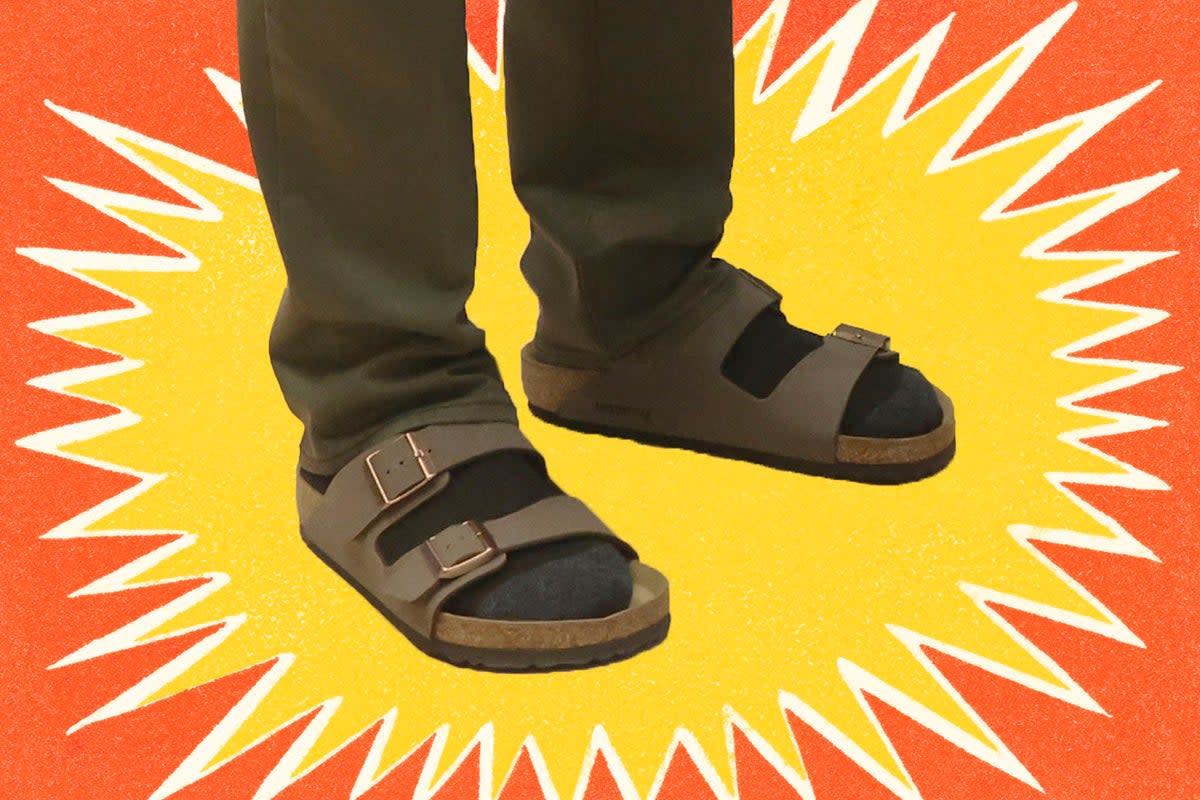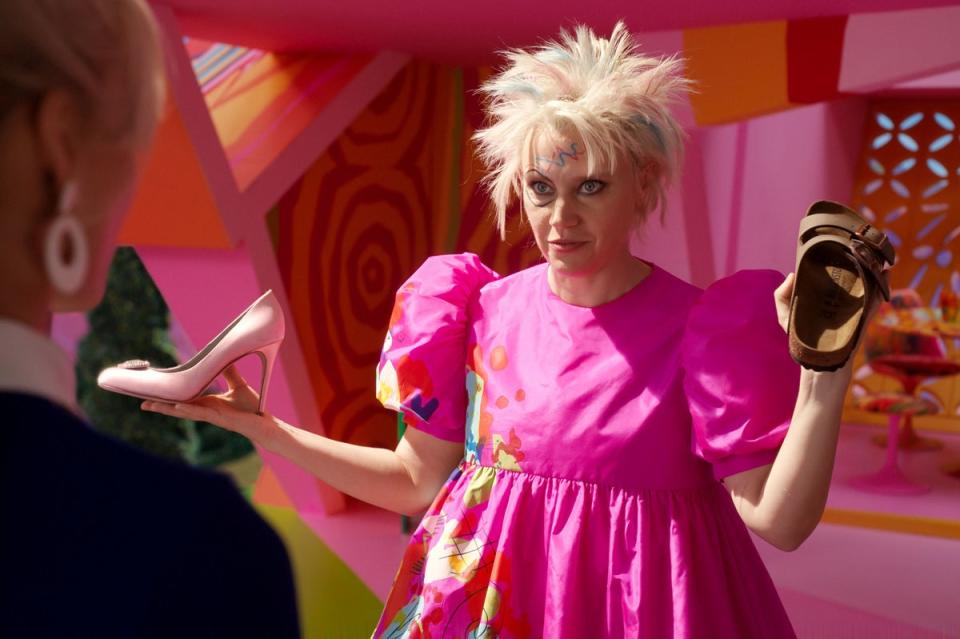Birkenstock or bust: How a deeply uncool shoe became a modern must-have

How do you define “cool”? Maybe it’s ostentation. Maybe it’s exclusivity. Maybe it’s a 250-year-old orthopaedically inspired German shoe. In 2023, odds are it’s the latter.
This week, it was announced that Birkenstock had landed on the US stock market with a $7.5bn (£6.1bn) valuation, more than double its worth in 2021. If you’re unfamiliar with these absurdly comfortable sandals, the classic “Arizona” Birkenstock features a layered sole made of jute fibre and moulded cork, offering your foot some serious support, with two thick suede straps coming in some sort of earthy hue.
The brand itself dates back to 1774, when founder Johann Adam Birkenstock started making shoes near Frankfurt. But for a long time, the shoes themselves were the pinnacle of dorkiness. There was nothing chic about the geek connotations, either. They were just, to put it bluntly, a bit lame – often associated with exceedingly earnest, granola-eating American liberals, and dubbed everything from “Geekenstocks” to “Flintstone feet”. You get the idea.
Today, though, Birkenstock sells roughly 25 million pairs of shoes a year, and the brand is seen on and celebrated by stars such as Kendall Jenner, Gigi Hadid, Katie Holmes and Sienna Miller. Some have even been spotted wearing them with socks, demolishing decades of jokes about a look once considered fashion’s cardinal sin. It all adds up to form the greatest redemption arc in footwear. But how has one company managed to pull off a complete 180, as if transforming a pumpkin into Cinderella’s glass slipper?
“The German engineering that has gone into this product actually speaks for itself,” says fashion analyst and author of Look at the Labels, Jennifer Walderdorff. “There are no gimmicks: the shoe does what it says on the tin. Its reliability is what [makes it] a fashion staple.”
It has not been a quick turnaround, though, its reappraisal starting – sort of – in the 1990s. Fashion fans may recall the famous photos of Kate Moss taken in 1990 by Corinne Day. They show Moss, then 15, posing topless on a beach in Camber Sands, smoking a cigarette in a series of shots that would later make her one of the most influential models and faces of her generation. But there is a small fact about the photos that often gets forgotten: Moss is wearing Birkenstocks in them.
It took a little longer for the trend to catch on properly. In 2013, Oliver Reichert became the first person outside the Birkenstock family to run the company, and it’s his leadership that’s helped steer the brand’s perception. It was that same year, for example, that Birkenstock began making appearances on runways: Céline models wore blue fur-lined sandals inspired by the German shoe, while A-list stars including Naomi Watts and Ashley Olsen started wearing them out and about. That summer, American Vogue declared that its staffers had, against all odds, “fallen for the Birkenstock”, noting how “a bulky shoe is actually more flattering on the leg than you would think”.
In the world we live in today, there is so much more room for fashion and function, hence the appeal of the Birk
Jennifer Walderdorff, fashion analyst
It’s from here that the humble Birkenstock began its ascent into the heart of the fashion zeitgeist. By 2017, there were designer collaborations, with Barneys New York partnering with the brand to release a limited edition line of pink fur-lined sandals. Collaborations followed with other brands including Opening Ceremony, Rick Owens, and, most recently, Valentino.
But as the latest valuation shows, the brand found a new lease of life this summer. You could barely step outside your house without spotting a pair. As for what’s fueled this recent surge, we can look to the pandemic, when we forwent shoes entirely and got accustomed to putting our comfort above all else. When lockdowns were lifted, all of us re-emerged with a shifted set of sartorial priorities, with high heels falling further down the totem pole in terms of stature and status. Today, there is nothing trendier than having your feet close to the ground.
What is particularly interesting about Birkenstock as a brand is that despite the constant movement of fashion trend cycles, the design of its signature shoe hasn’t changed. “Birkenstock has lasted so long and grown to be the super giant it is because of the awareness and availability of information on its benefits,” adds Walderdorff. “There are lots of clothing items that are no longer worn due to their detrimental effects on the body, like corsets, which realign your internal organs to no gain. Similarly, overwearing high heels contributes to foot deformities. In the world we live in today, there is so much more room for fashion and function, hence the appeal of the Birk.”
The rise of “normcore” can also be attributed to Birkenstock’s popularity. Characterised by unpretentious, utilitarian and functional clothing, the trend lends itself to the aesthetic of an orthopaedic shoe. “Normcore” also provide Birkenstocks the air of new wave edge, the shoes slotting neatly into a look that has become particularly popular among east London hipsters – take one look at the Instagram meme account Real Housewives of Clapton (which parodies a very specific type of natural-wine-drinking, Perello olive-eating, east Londoner) and you’ll see what I mean.

Fashion has also generally seen an exponential rise in flat shoes. According to the Lyst Index, the industry’s quarterly report ranking fashion’s hottest brands and products according to Google searches and social media mentions, the season’s must-have is the Maison Margiela Tabi, a split-toed Japanese-inspired loafer. In fourth place is the Nike x Martine Rose Shox MR4 Mule, a pair of Tory Burch mules came in sixth place, New Balance trainers in eighth. And what was in fifth place? None other than the Birkenstock Arizona, of course.
Perhaps the final hurdle for Birkenstock was to align itself with the feminine ideal – a space previously occupied by stiletto heels. Now, though, changes in attitudes around feminism and how feminist ideologies can be expressed through a woman’s clothing and appearance – yes, feminists can wear makeup! – has created a space for Birkenstock after all. In fact, this formerly frumpy shoe is now being perpetuated as the bastion of femininity. Don’t believe us? Simply take a look at the hottest film of the summer.
At the end of Greta Gerwig’s stellar Barbie, our hero (played by Margot Robbie) has undergone a major emotional transformation that has seen her find a sense of purpose and identity. Gone are the feet once permanently raised so that they were perfectly positioned for a pair of heels. By the film’s conclusion, Robbie’s Barbie is an autonomous figure, a woman epitomising everything about contemporary feminism. And that includes having feet that are flat. Her footwear of choice? Why, a pair of pink Arizona Birkenstocks.

